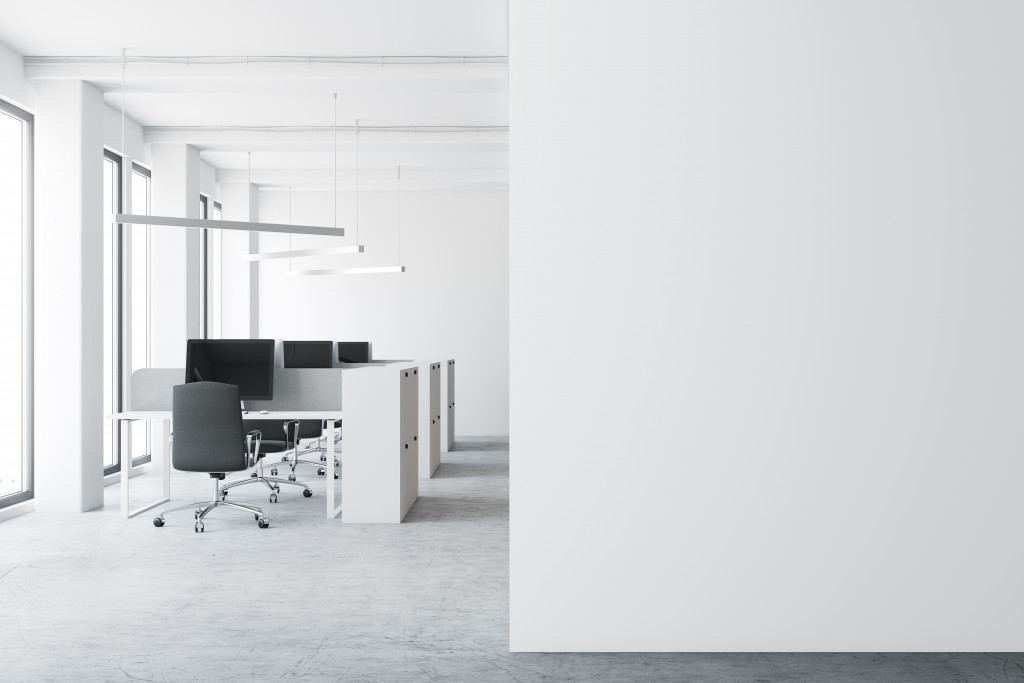- Ergonomically designed furniture, natural light exposure, and strategic use of color can create an optimal working environment for employees.
- When employees are given more control over their workspace, it leads to improved job satisfaction and increased productivity.
- Natural light is essential for regulating vitamin D levels and keeping employees alert during the day.
- Color psychology can help create an atmosphere in which people feel more positive and productive.
It’s no secret that a well-organized, comfortable office environment can help workers stay productive. But did you know that office design is actually linked to employee performance? Studies have found that the layout of an office space can have a significant impact on how employees work and how productive they are.
A study conducted by Harvard Business Review in 2014 examined the impact of workspace design on productivity and found that when employees had more control over their workspace, it resulted in higher job satisfaction and increased productivity.
Take a look at the link between office design and productivity.
The Impact of Ergonomics
Ergonomically designed furniture and equipment can go a long way toward keeping employees comfortable and productive. If workstations aren’t set up correctly, it can lead to soreness, fatigue, and other physical issues that detract from performance.
That’s why it pays to invest in ergonomic office furniture like adjustable chairs, standing desks, monitors with adjustable height settings, etc. That way, employees can customize their workspaces to fit their needs. You can find these kinds of office furniture for sale at stores specializing in office supplies.
A study conducted by Lagos State University in 2017 was one of many to suggest that ergonomically designed furniture and equipment can have a positive effect on employee performance. The study examined how adjustable chairs, monitors with adjustable height settings, and other ergonomic solutions could improve comfort levels at the office and reduce physical strain on employees.

The Impact of Natural Light
Research has also found that natural light has a major effect on employee productivity. Several studies conducted by the Lighting Research Center examined the impact of natural light on office productivity. The researchers found that when employees had access to more natural light, it improved their performance and health outcomes.
Natural Light
Natural light helps regulate the body’s circadian rhythm, which helps keep people alert during the day and relaxed at night. This means that windows should be placed strategically around the office so that everyone gets access to sunlight throughout the day. Sunlight is also essential for regulating Vitamin D levels which can help reduce stress levels and boost energy levels—both of which are important for boosting productivity in the workplace.
Alternatives to Consider
If you can’t get natural light in your office, there are other ways to ensure it’s comfortable and productive. You can use bright lights or lamps to help give the office more light. When it comes to finding the best light bulbs for productivity, there are several key factors to consider.
First and foremost, you want to make sure that your lighting is bright enough to reduce eye strain and boost alertness during the day. This means selecting bulbs with higher color temperature (or “color rendering index”) levels. You should also look for bulbs that provide even light distribution and don’t produce any harsh, glaring shadows.
Some examples include:
- LED bulbs
- Fluorescent bulbs
- Incandescent bulbs
- Compact fluorescent lamps (CFLs)
- High-intensity discharge lamps (HIDs)
- Light-emitting diode lights (LEDs)

The Impact of Color
Color also plays an important role in setting the tone of office space. They have a direct impact on our mood and emotions, which can affect how productive we are.
Color Psychology
You should also be mindful of color psychology when choosing decorations for your office. Using specific colors in certain areas will help encourage people to focus on particular tasks or activities and feel more positive about their work environment.
Research has shown that the most effective color combination for employee productivity in the office is an ideal balance of cool, neutral hues and energizing bright colors. Cool hues like blues and greens create a calming atmosphere that encourages focus and concentration, while brighter colors like yellow and orange can help stimulate creativity and collaboration.
Avoid using too many dark or bright colors together since this can make it difficult to concentrate and focus on tasks. Stick with a combination of cool, neutral hues and energizing bright colors.
The Bottom Line
There is a strong connection between office design and employee productivity—and it pays for employers to consider this when setting up their workspaces. Investing in ergonomically designed furniture, ensuring adequate natural light exposure, and utilizing strategic color schemes can all help create an optimal working environment where employees feel comfortable and motivated to perform at their best every day. With just a few tweaks here and there, employers can create an inviting workspace where employees feel inspired to do great work.
